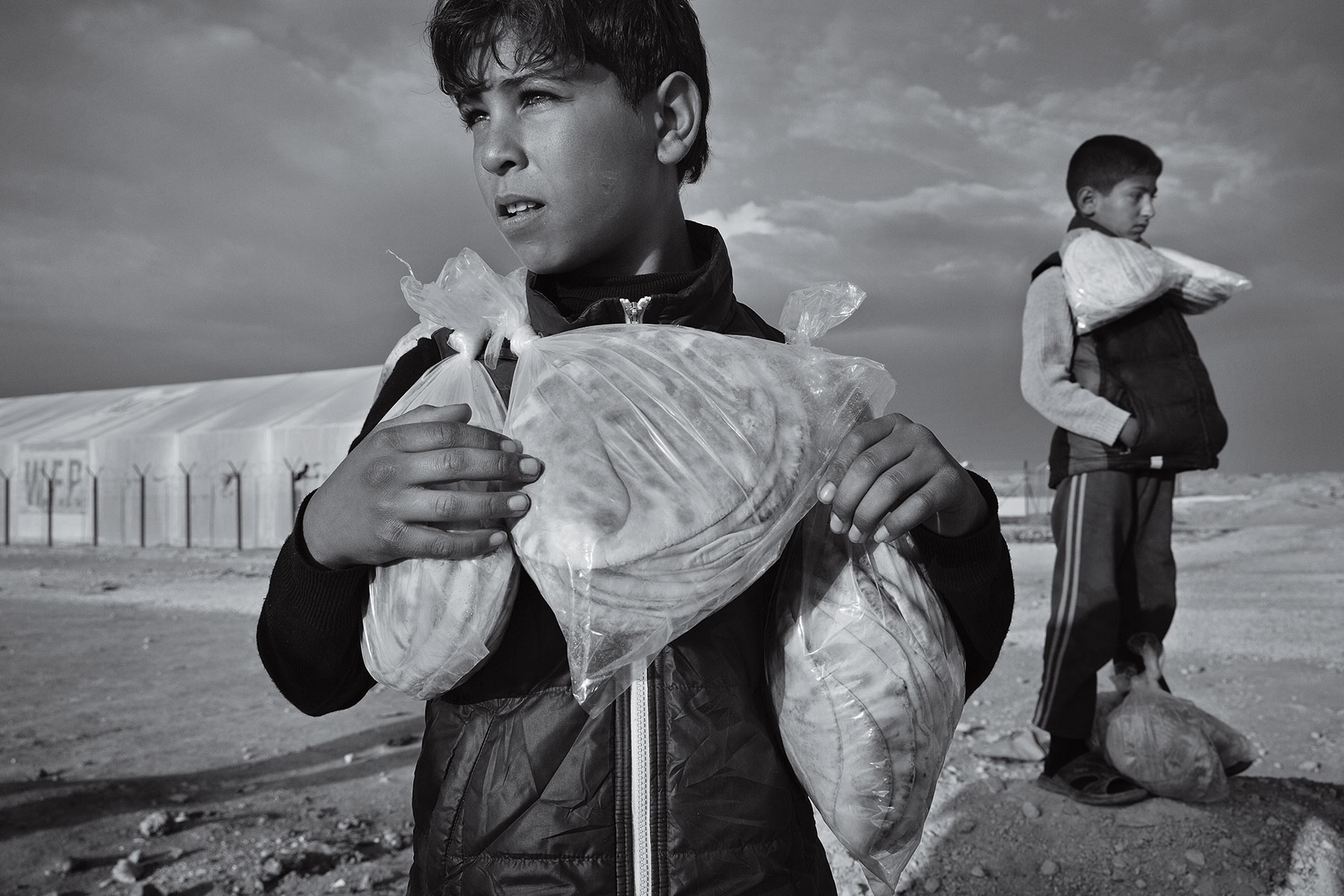
In many ways Za’atari Refugee Camp, which sits on the high desert just inside Jordan, is more like a city than a temporary way station for Syrians who have fled their country’s brutal civil war. Garbage and water trucks make the rounds on streets laid out in a grid. Streetlights and satellite dishes stipple a skyline growing more horizontal than peaked as one-room prefabs come to outnumber canvas tents.
There’s even a marquee shopping street, its name a blend of the traditional Arabic for Syria and a certain Parisian boulevard. On the Shams Élysées, to open a store, just carve a display window out of the prefab with a circular saw and set out your goods. From upholstered pillows to parakeets, the promenade gives impromptu expression to Syrian entrepreneurship. As TIME photographer James Nachtwey’s haunting images show, Za’atari increasingly looks like a permanent settlement.
But most of its residents would go home tomorrow if the horrors they fled weren’t still waiting for them there. “I really want to go back,” says Abu Anas, 46, a candy seller from Damascus. “But this old man was walking down the main street–a 90-year-old man walking with a stick–oh, my God, they hit him with a cleaver.” The merchant’s 5-year-old son stares up, gaping at the sight of his father in tears. “I saw it with my own eyes. Our neighbor–who lives with his mother–they were incinerated.”
Of the roughly 6 million Syrians pushed from their homes during nearly three years of civil war, 2.3 million have crossed the country’s borders to become the second largest refugee population in the world. Nearly 900,000 are in Lebanon, many stuck in makeshift camps because the government, wary of the refugees’ putting down roots, refuses to allow the U.N. to establish formal ones like Za’atari, the largest in the region. The U.N. High Commissioner for Refugees (UNHCR) and the Jordanian government established Za’atari in July 2012 to house those fleeing Dara’a, the district of southern Syria where protests against the Syrian regime first took hold. Originally built for 30,000 people, the camp quickly swelled to bursting, at one point absorbing 4,000 arrivals a day. The influx overwhelmed both Jordan, where every 10th resident is now a Syrian refugee, and the aid community.
The displacement is emotional as well as physical. Aid workers spent much of Za’atari’s first year dodging rocks thrown at them by refugees angrier than many had ever seen–a sign of a population traumatized by an increasingly vicious war between neighbors. “They shot him in the head. In front of me,” says a woman named Umm Mohammed, of her husband, who was killed in Dara’a last March by uniformed men. “I saw this. I never thought it would happen. Everything we saw on TV, we saw in real life.”
Like a normal city, Za’atari has doctors, but here they treat children who lost their hearing to bomb blasts. And there are street signs, but here they are written in spray paint and honor not dead statesmen but family members killed in the fighting. As that fighting continues over the border, new refugees continue to arrive–about 300 a week, camp officials say. The U.N. estimates that by the end of 2014, 1.7 million more Syrians will have left their homes.
Each week that passes here seems to deepen the air of permanence–and the vengeful anger of some of the refugees, scattered like seeds across the Middle East, with little to do but dwell on what they cannot forget. “I want to go back to the revolution,” says Abu Anas, the candy merchant, his eyes now dry. “As soon as we succeed, you’re going to see the massacres.” Which, of course, would mean a whole new refugee crisis.
More Must-Reads from TIME
- Donald Trump Is TIME's 2024 Person of the Year
- Why We Chose Trump as Person of the Year
- Is Intermittent Fasting Good or Bad for You?
- The 100 Must-Read Books of 2024
- The 20 Best Christmas TV Episodes
- Column: If Optimism Feels Ridiculous Now, Try Hope
- The Future of Climate Action Is Trade Policy
- Merle Bombardieri Is Helping People Make the Baby Decision
Contact us at letters@time.com